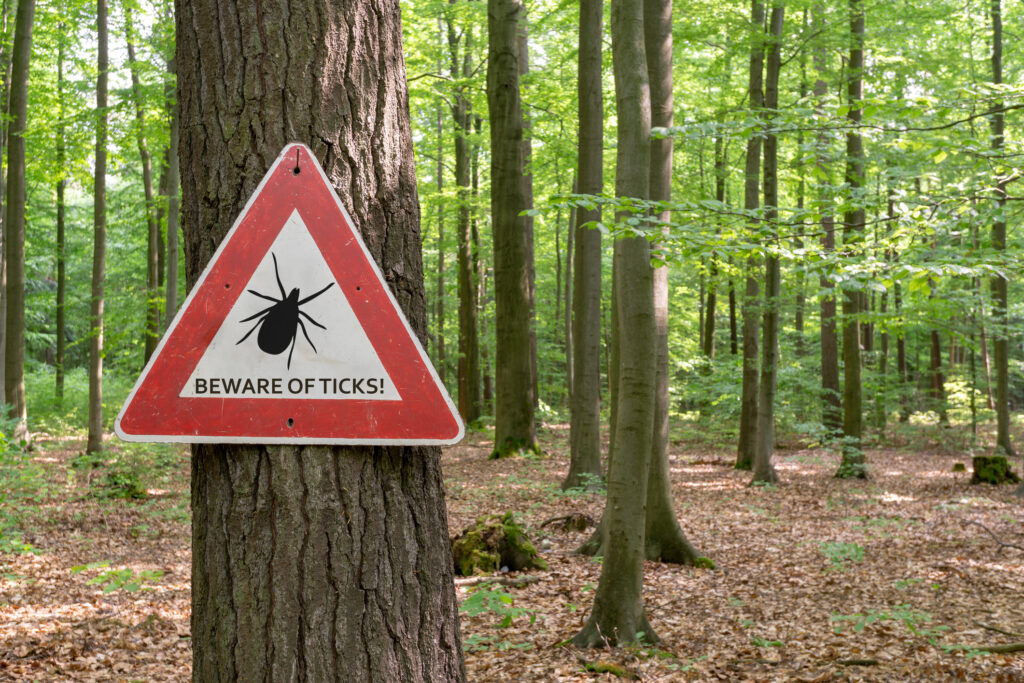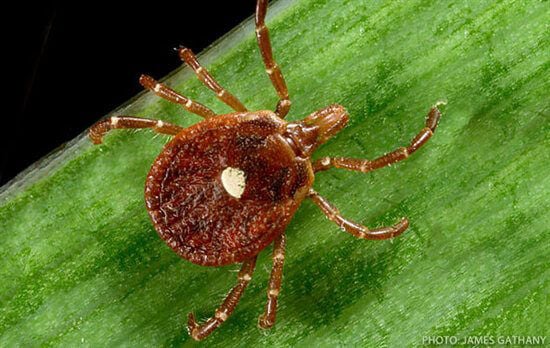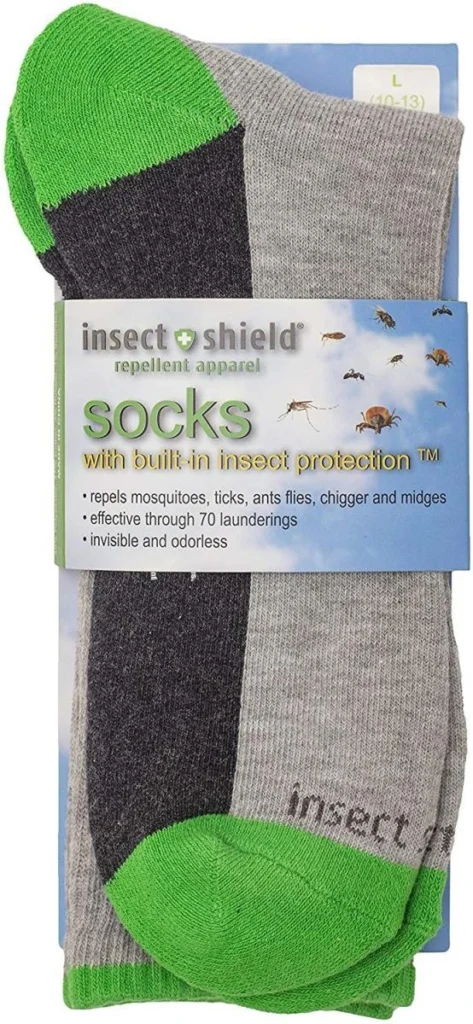I never expected to learn a lot about ticks this summer but I have.

You may ask why. I am spending the last two weeks of June on Chappaquiddick Island which is a stone’s throw from Edgartown on Martha’s Vineyard in Massachusetts. It turns out that ticks are abundant on Chappy, which is what everyone calls Chappaquiddick Island.
I lived on Chappy for years in the summers when I was growing up. More recently, since Covid, I have taken most of my family – kids and grandkids – to Chappy for two weeks in late June. I never was concerned about ticks until this summer.
During a two-hour off-road bicycle trail ride on Chappy the other day, I encountered two men all decked out in heavy light colored clothes, from head to toes. I stopped and asked them what they were doing. They informed me that they work for the local public health department and their job was to identify and count ticks. Wow, I said to myself. I did not even know that there was a need for such skilled workers.

For the next 20 minutes these two men regaled me with facts about ticks. Information that was all news to me. Let me tell you, they got my attention.
I biked back to our rental house and informed my kids and grandkids about what I had found out.
As opposed to insects and bugs, ticks are arachnids – the part of the arthropod family that is land based, non-flying, eight legged including spiders, scorpions, mites and ticks. There are 850 different tick species around the world. 90 are present in the United States. The two that inhabit Chappy are deer ticks and lone star ticks. These two tick species are primarily in the eastern half of the United States. However, there are other tick species that find their homes in the western half of the country.
In addition, just recently Asian longhorned ticks were identified in Chilmark, another town on Martha’s Vineyard, but have not been reported on Chappy as of yet. The Asian longhorned ticks are parthenogenic, which means that the females can lay eggs without a male! Amazing! One adult female can lay up to 3,000 eggs!

What do ticks look like? They come in different sizes and colors. They primarily focus on animals, like cows, sheep and dogs. However, they are easy to get on humans if you are hiking, especially through underbrush, woods or through a field with tall grass and leaf litter.

Deer ticks, or Ixodes scapularis in Latin (I cannot resist giving you the Latin version since I studied Latin for 5 years in high school and college), are the ones that people worry about the most for it can carry the borrelia bacteria which causes Lyme disease, which can lead to severe fatigue, a stiff aching neck, tingling or numbness in the arms and legs, or facial paralysis. However, the tick has to be attached for 36-48 hours before the Lyme disease bacterium can be transmitted. Deer ticks only live for two years and they are blind. Humans have to rub against a leaf or bush to get one.

Lone star ticks are so named because of the bright white spot on the back of adult female ticks. Lone star ticks are the most aggressive. Contrary to the deer tick, the lone star ticks find you. Lone star ticks can trigger a severe allergic reaction to red meat, an affliction known as alpha-gal syndrome.
Ticks carry microbes that can cause a variety of diseases. In addition to the diseases mentioned above, some of the diseases carried by ticks include tick-borne relapsing fever, and Rocky Mountain spotted fever. Over time additional impacts may include memory loss, muscle weakness, fatigue, fevers, and declining cognitive function.
Tick bites differ from other insect bites in three ways. One, there is no puss in a tick bite. Two, tick bites usually occur on the back of the neck, scalp, groin, and legs in humans, especially your toes and the back of your knees. Three, tick bites are usually solo events, not multiple in number.

The best way to prevent ticks is to wear light colored (easier to see the ticks) long sleeved clothing and an Insect Shield sock that covers the calf and comes up to just below the knee. Tuck everything in. Your pants should be tucked into your socks. Ideally all your clothes should be treated with permethrin. In addition, use tick repellent. Spray yourself with 20% Deet.
Make sure that you do tick checks — constantly checking yourself and your kids for ticks after being outside in potentially tick friendly environments. One of the reasons that ticks are difficult to find is that they don’t hurt, itch or bite. And they can be very, very small. They can be as small as a poppy seed. Ticks feed on your blood. When they bite they burrow their head under your skin. This can last up to 10 days. The easiest way to find them is after they begin to swell up with the blood they are sucking from your body.

If you get a tick, it is important to remove it as soon as possible. This is an art. It is not easy. Showering after exposure can be helpful. In trying to remove the tick what works best are tweezers. Do not try to twist or jerk the tick out, since this often results in the mouth parts remaining in the skin.
After removing a tick, disposing of it is another challenge. Do not try to squish it. The engorged tick may have infected blood that could splatter if crushed. Believe it or not, the best thing to do is to save the tick, put it in a zip lock plastic bag and put it in the freezer. The reason for this is to be able to take it to your doctor so that he/she can determine what type of tick it was, so that they can best prepare for what diseases might be at risk.

During our trip my daughter-in-law Chelsea found a couple of ticks on her body. She was immediately concerned because she is still breast-feeding Olivia, my granddaughter, who is all of 6 months old. Not wanting to take any chances we headed off to the Emergency Room of the only hospital on Martha’s Vineyard.

Amazingly, we found that there were no people waiting to be seen in the ER. Can you believe that? When was the last time you went to an ER and the waiting room had no one in it? Needless to say, we were pleased and very quickly Chelsea was seen, attended to and prescribed an antibiotic. She also needs to be tested in three weeks to double check that she is free and clear of any problems.
Bottom line, I learned a lot about ticks.

The tick thing is real! Always a big part of our trips to Pennsylvania is to do the nightly tick check! Am glad Chelsea is okay!!
Brings back the 54 year old news item from there that involved a couple of characters Senator “Chappy” Ted and Mary Jo. Any chance he had alpha gal syndrome when he abandoned the Pontiac and swam out of Poucha Pond? Was one of them pathogenic? Did he later develop a tick in jail? It was mystery back then that remains so to this day.
So familiar for us. Your energy level exceeds ours so we have not been back for a couple of years.
Are you back finally in your houseboat?
Wow, Neil. That is most interesting. The Cdn. Prairies are also full of ticks.You did a great job of teaching us, and we do need to be wary when outdoors.Any kind of bites are nasty, and i am really allergic to them. On a few occasions I have had to go to hospital emergency, and one time was laid up in bed for 10 days, visiting my mother in Brandon, Manitoba, not being able to even move my leg. Never did discover what it was, and was on antibio”tics”, for 10 days, after which I had a severe allergic reaction to the antibiotics. That compounded the problem, but it all eventually went away. When I am gardening, I wear a nylon zipped up all around the head “mosquito” jacket, and long pants and rubber boots. I look like something from outer space, but don’t take any more chances. Needless to say, I garden(actually just the weeding), early in the morning. Thanks so much for making us more aware of this. Those grands are so cute. They are a blessing!
Not my favorite story…but, one I also got to experience first hand. Now that the trip is over…I’m sure everyone can breathe easier. Too bad these itty bitty insects carried such alarming concerns for dreaded ailments while enjoying that idyllic wooded island!